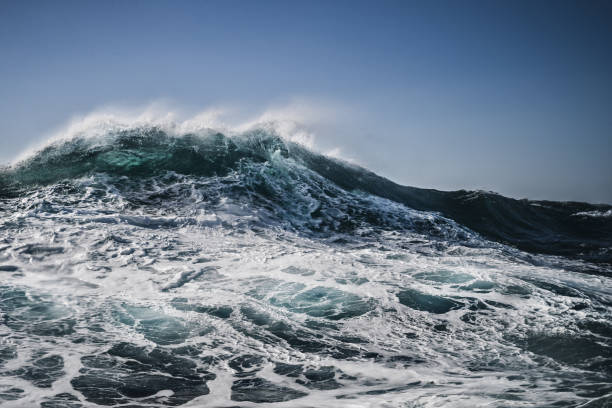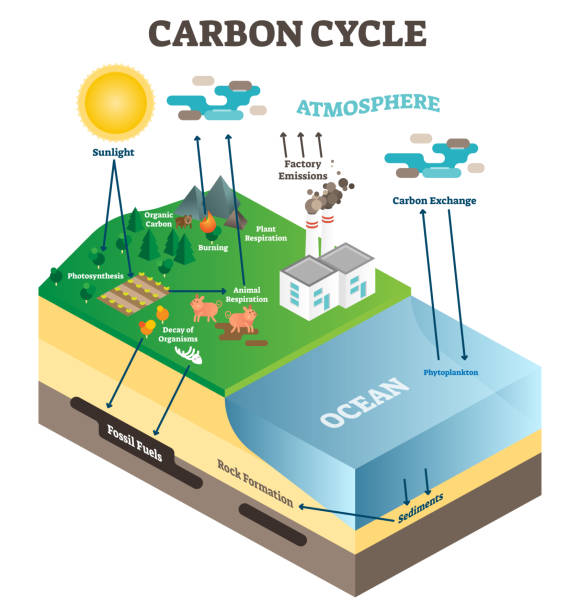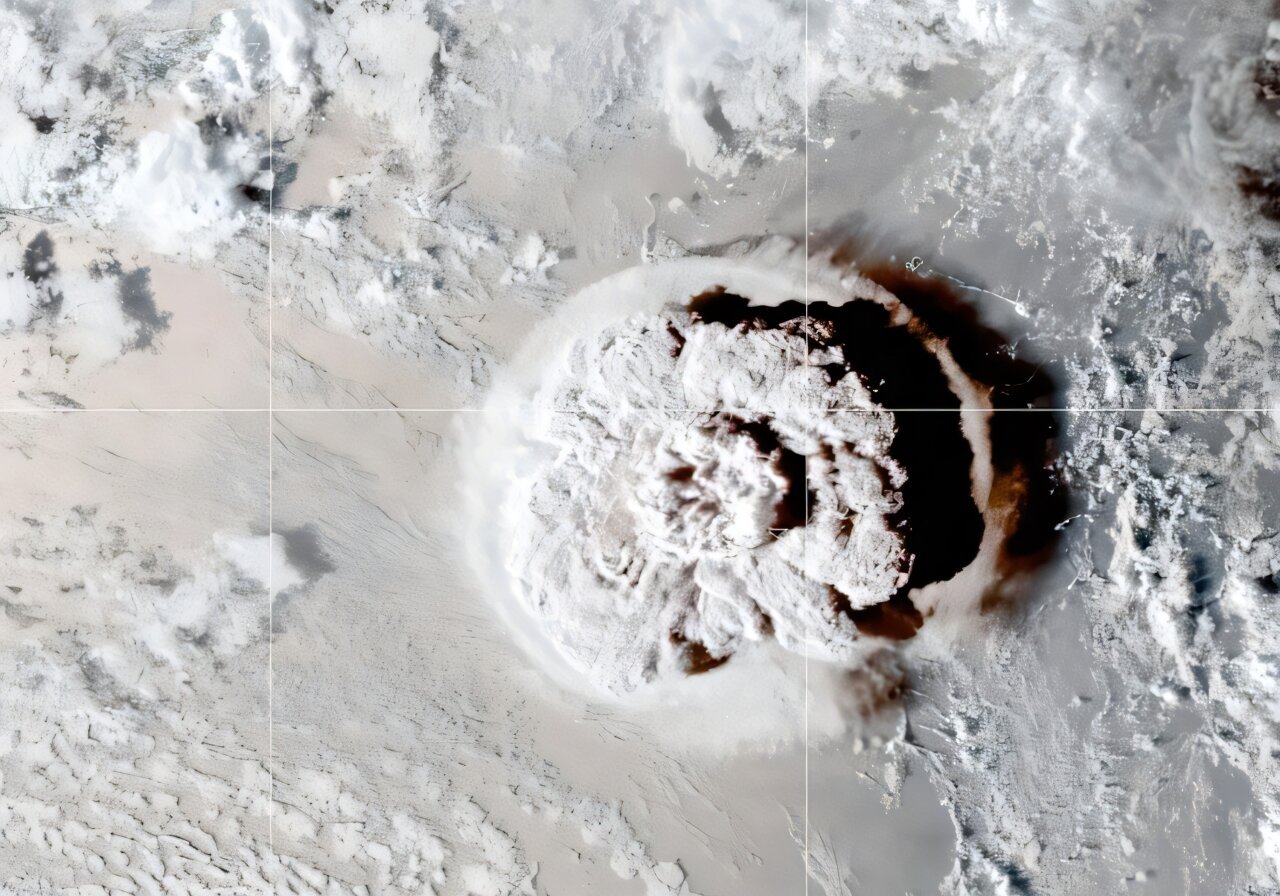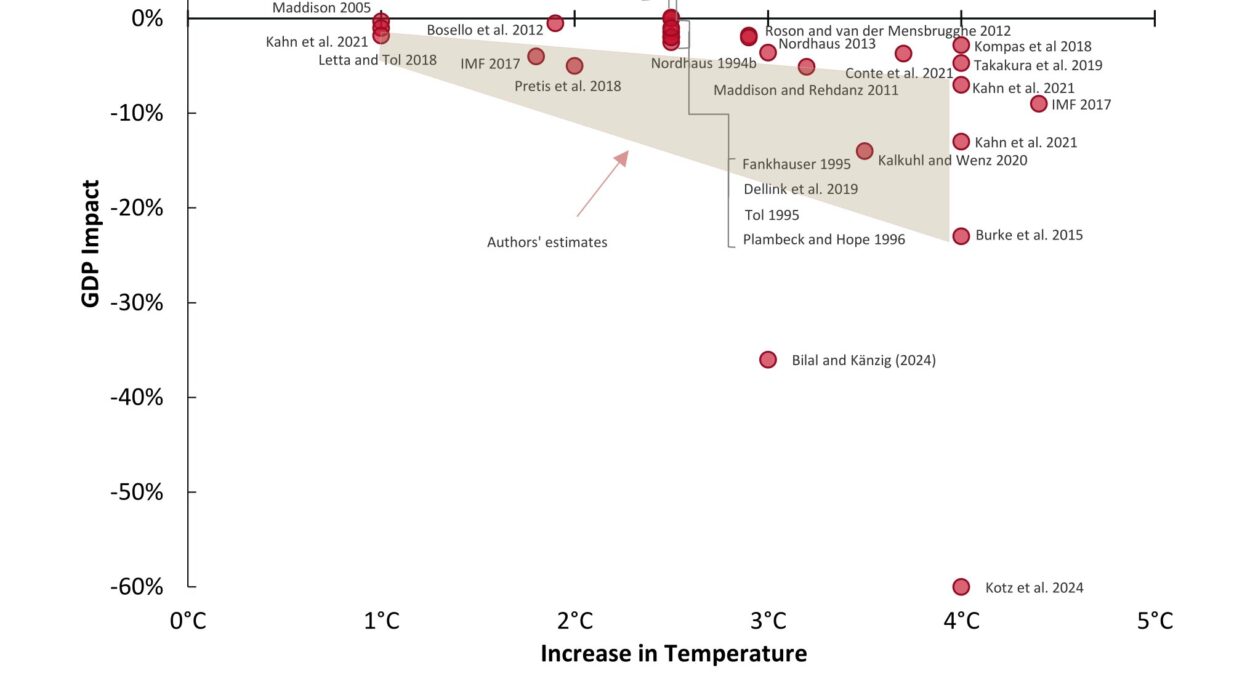From space, Earth appears as a shimmering marble of blue and white—a swirling, breathing planet adorned with clouds and capped with snow. But it is the vast, glistening blue of our oceans that dominates the view. Oceans cover more than 70% of Earth’s surface and hold over 97% of the planet’s water. Yet their influence stretches far beyond the watery deep.
The oceans are not just vast reservoirs; they are Earth’s beating heart, lungs, and memory rolled into one. They are the silent architects behind every gust of wind, every drop of rain, and every season’s rise and fall. When we talk about climate, we often look to the skies—carbon emissions, greenhouse gases, weather patterns—but the true engine regulating Earth’s climate lies beneath the waves.
It is here, in the boundless blue, that the planet’s most intricate climate machine hums silently—a system of staggering complexity and delicate balance. The oceans absorb heat, store carbon, fuel winds, and steer storms. They breathe with the seasons and pulse with the tides. They are guardians of balance and mediators of change.
And their story is as old as Earth itself.
The Origins of a Liquid Climate Engine
Billions of years ago, when Earth was still a fiery, molten sphere, water began to condense and fall from the sky. Volcanoes spewed vapor, and comets delivered icy payloads. Slowly, the oceans filled. What emerged was more than a planetary feature—it was a climate regulator with superpowers.
Unlike the land, which heats and cools quickly, water has an incredible ability to store and transport heat. This property—called high specific heat capacity—means the oceans act like massive batteries, soaking up warmth during hot periods and slowly releasing it during cool ones. This buffering system helps stabilize global temperatures and prevent extreme swings that could otherwise make life impossible.
Throughout Earth’s deep past, the oceans have been at the forefront of both cataclysm and salvation. When volcanic eruptions or asteroid impacts blotted out the sun, it was the oceans that moderated the chill. When greenhouse gases surged, it was the oceans that drew down the excess carbon.
They are, in the most literal sense, the memory keepers of Earth’s climate.
How the Oceans Absorb Heat from the Atmosphere
Every day, the sun pours energy onto Earth’s surface—about 173,000 terawatts of it. The oceans absorb most of this solar radiation, particularly in the tropics, where sunlight hits most directly. As the sun warms the surface waters, this heat doesn’t just sit idly. It moves.
Winds, waves, and currents stir the upper layers of the ocean, distributing heat across vast distances. The oceans, in turn, release some of this heat back into the atmosphere, influencing air temperature and weather patterns.
This dance between ocean and air forms the backbone of climate regulation. In the tropics, warm ocean waters evaporate rapidly, injecting moisture into the atmosphere. That moisture fuels the development of clouds and storms, some of which spiral into hurricanes or monsoons. As the moist air rises and condenses, it releases heat—an invisible current of energy flowing from sea to sky.
Meanwhile, cooler waters in the polar regions absorb less sunlight, maintaining a colder, denser environment. This contrast between warm and cold waters drives global currents that act like conveyor belts, distributing heat from the equator to the poles.
It is an elegant system of balance, but one vulnerable to disruption.
Ocean Currents: Earth’s Invisible Highways
Beneath the surface, powerful rivers of water flow across the planet’s oceans. These ocean currents are among the most important components of Earth’s climate engine. Some are surface currents, driven by wind and shaped by Earth’s rotation. Others are deep ocean currents, moving cold, dense water through the abyssal depths like slow-moving ghosts.
Together, these surface and deep currents create a global circulation system known as the thermohaline circulation—or, more poetically, the “Global Ocean Conveyor Belt.” This system connects every ocean on Earth, transporting warm water from the tropics to the poles and returning cold water back again.
The Gulf Stream is one of the most well-known currents in this system. Born in the warm Caribbean, it flows up the eastern coast of North America, crosses the Atlantic, and bathes Western Europe in warmth. Without it, places like the United Kingdom or northern France would be as icy as parts of Canada.
But these currents don’t just move heat—they also move life. Nutrients, carbon, and marine organisms are swept along in this planetary bloodstream. Wherever warm and cold currents meet, rich ecosystems bloom. And in those blooms lies another critical function: carbon regulation.
Oceans and Carbon: Earth’s Climate Vault
Carbon dioxide is the most notorious greenhouse gas. As human activity pumps more and more of it into the atmosphere—burning fossil fuels, clearing forests—the oceans have emerged as unsung heroes in the fight against global warming.
Each year, the oceans absorb roughly 25-30% of the carbon dioxide we emit. That’s billions of tons of carbon vanishing from the skies and dissolving into the sea. Some of this CO₂ reacts with water to form carbonic acid, which eventually turns into bicarbonates and sinks deeper into the ocean. This process, while helpful for reducing atmospheric CO₂, comes at a cost: ocean acidification.
As more carbon enters the oceans, the water becomes less alkaline. This subtle shift in chemistry threatens marine life, especially those that rely on calcium carbonate to form shells and skeletons—corals, clams, plankton. If these species suffer, so too does the base of the oceanic food chain.
But carbon regulation isn’t just chemical—it’s also biological. The ocean teems with microscopic plants called phytoplankton. These tiny organisms are the ocean’s equivalent of trees. Through photosynthesis, they absorb carbon dioxide and release oxygen. When they die, some sink to the seafloor, trapping that carbon for centuries. This “biological pump” plays a vital role in the carbon cycle and is essential for climate stability.
The Cry of the Melting Ice
One of the clearest signs that the climate system is under strain is found at the ends of the Earth—in the melting of glaciers, sea ice, and polar ice caps. As global temperatures rise, the oceans are heating too. This warming melts ice at an accelerating pace.
When land-based ice sheets in Greenland or Antarctica melt, they contribute directly to sea-level rise. When sea ice vanishes, it creates a feedback loop. Ice reflects sunlight, but dark ocean water absorbs it. As more ice disappears, more heat is absorbed, accelerating warming even further.
This polar melting has profound implications. It can disrupt ocean currents by flooding them with fresh water, which is lighter and less dense than salty seawater. If enough freshwater enters the North Atlantic, it could slow down or even halt the thermohaline circulation. Such a change would be catastrophic—plunging Europe into cold, altering monsoon patterns in Africa and Asia, and disrupting rainfall around the globe.
The melting of ice is not a distant threat. It is already happening, and the oceans are responding.
Storms, Droughts, and Shifting Winds
The oceans and atmosphere are in constant conversation, and when one changes, the other listens. As oceans warm, the energy available to fuel storms increases. That means more intense hurricanes, heavier rainfall, and stronger winds.
At the same time, shifting ocean temperatures can alter atmospheric pressure systems, causing droughts in some regions and floods in others. Phenomena like El Niño and La Niña—natural oscillations in Pacific Ocean temperatures—have long shaped global weather patterns. But as climate change accelerates, these patterns are becoming more erratic.
For instance, El Niño events, which bring warm water to the eastern Pacific, often trigger heavy rains in the Americas and droughts in Asia and Australia. These changes disrupt agriculture, threaten water supplies, and endanger lives. La Niña does the opposite, amplifying storms in some places while drying others out.
In every case, the oceans are the invisible levers pulling the strings of weather and climate.
The Ocean’s Lungs: Oxygen and Life
Most people don’t realize that every second breath they take comes not from trees, but from the ocean. The vast majority of Earth’s oxygen is produced by marine organisms, particularly phytoplankton. These microscopic marvels turn sunlight into life, forming the base of the marine food web and generating oxygen as a byproduct.
But warming waters are threatening this system too. As oceans heat up, they stratify—forming layers that don’t mix easily. This prevents oxygen-rich surface waters from reaching deeper layers, leading to oxygen-depleted “dead zones” where life struggles to survive.
Moreover, rising temperatures can stress phytoplankton populations, leading to blooms in some places and crashes in others. Coral reefs, already weakened by acidification, bleach and die under prolonged heat stress. Fisheries collapse. Ecosystems unravel.
And all the while, the climate continues to shift.
A Delicate Balance in Danger
The oceans have been our allies for millennia. They have shielded us from the worst effects of climate extremes, absorbed our pollution, fed our civilizations, and regulated the rhythm of the seasons. But they are not invincible.
As global temperatures rise, the oceans are changing faster than at any point in recorded history. Sea levels are rising. Currents are weakening. Ice is melting. Acidification is spreading. And marine life is under siege.
Yet the greatest danger may be ignorance. Because the oceans are vast and distant, hidden beneath the horizon, their cries go unheard. But make no mistake: when the ocean suffers, humanity does too.
Hope in the Depths
Despite the gravity of the situation, there is still hope. Scientists around the world are racing to understand the complex interactions between ocean and climate. Satellite missions, underwater drones, and floating sensors track temperature, salinity, and currents in real time. Marine protected areas are expanding. Policies to reduce carbon emissions are gaining momentum.
There is even talk of ocean-based climate solutions—such as restoring mangroves and seagrass beds, which capture carbon and buffer coastlines from storms. Innovations in renewable energy, like offshore wind and wave power, offer cleaner ways to meet our needs without poisoning the skies or the seas.
Education is also key. The more we understand the oceans, the more we appreciate their value. And appreciation leads to action.
Conclusion: The Breath of the Earth
In the end, the oceans are not just vast bodies of water—they are the living, breathing soul of the planet. They cradle the climate, sculpt the continents, and nurture life in forms we have yet to discover. They are ancient and eternal, yet also fragile and changing.
To ignore the role of Earth’s oceans in climate regulation is to blind ourselves to the very system that makes life possible. To protect them is not a matter of charity or idealism—it is a matter of survival.
As the waves crash upon the shore, as the tides ebb and flow, as the deep currents whisper their secrets to the stars, we are reminded that we are all part of something greater. Something blue, something deep, something worth saving.
The oceans are not apart from us. They are a part of us.
And their fate is our own.






